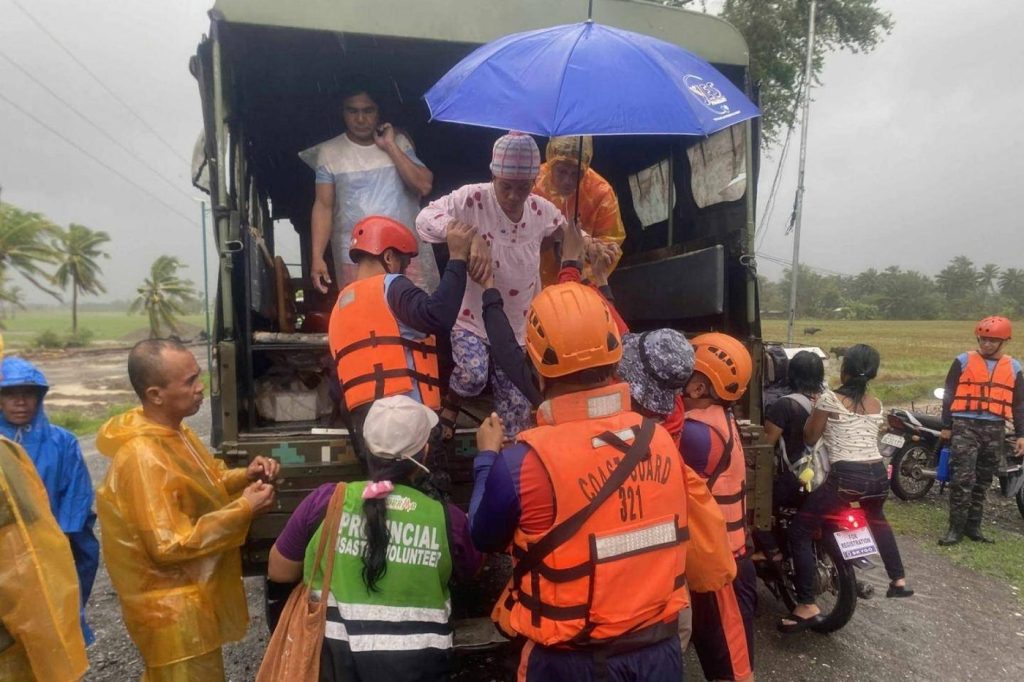MANILA, Philippines (AP) – Typhoon Fung-wong has moved out of the northwestern Philippines after causing significant damage, including floods and landslides, resulting in the power outage across entire provinces. Reports indicate that at least two people have died and over 1.4 million individuals have been displaced due to the storm's impact.
As the storm progresses, it is forecasted to head northwest toward Taiwan. Fung-wong unleashed its full force on the northern Philippines while the nation was still grappling with the aftermath of Typhoon Kalmaegi, which had already claimed at least 224 lives in central provinces before it continued to ravage Vietnam, where at least five additional deaths were reported.
Making landfall in northeastern Aurora province on Sunday night, Fung-wong was classified as a super typhoon due to its sustained winds reaching up to 185 kph (115 mph) and gusts of up to 230 kph (143 mph). The storm spread across an expanse of 1,800 kilometers (1,100 miles), weakening as it encountered mountainous regions and agricultural plains. Eventually, it moved from the province of La Union into the South China Sea, as observed by state meteorologists.
Officials reported that one individual drowned in flash floods in Catanduanes, while another victim in Catbalogan city, eastern Samar province, died when her house collapsed during the storm. Prior to landfall, more than 1.4 million people were evacuated to emergency shelters or stayed with relatives, with about 318,000 still residing in evacuation centers as of Monday.
The powerful winds and relentless rains brought flooding to at least 132 northern villages, stranding some residents on rooftops as water levels rose swiftly. It was estimated that around 1,000 houses sustained damage from the storm. Bernardo Rafaelito Alejandro IV of the Office of Civil Defense noted that blocked roads due to landslides would be cleared as weather conditions improved on Monday.
Despite the typhoon passing, Alejandro cautioned that its residual rains still pose a threat in certain regions of northern Luzon, including metropolitan Manila. Authorities declared their intention to undertake rescue, relief, and disaster-response operations as the situation unfolds.
Philippine President Ferdinand Marcos Jr. announced a state of emergency on Thursday, in light of the extensive damage inflicted by Kalmaegi and the anticipated effects of Fung-wong, also referred to as Uwan in the Philippines. In the Philippines, tropical cyclones with sustained winds of 185 kph (115 mph) or more are categorized as super typhoons to emphasize the urgency associated with these extreme weather events.
Although the Philippines has not officially sought international assistance following the devastation from Kalmaegi, Teodoro indicated that both the United States and Japan, as the country's long-standing treaty allies, are prepared to extend help if necessary. Schools and most government offices were closed on Monday and Tuesday in response to the situation, with over 325 domestic flights and 61 international flights canceled over the weekend and continuing into Monday. Additionally, more than 6,600 commuters and cargo workers found themselves stranded in ports as the coast guard advised against navigating rough seas.
The Philippines faces an average of 20 typhoons and storms each year, in addition to frequent earthquakes and the presence of more than a dozen active volcanoes, solidifying its title as one of the world's most disaster-prone nations.










